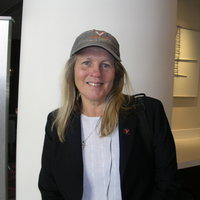From Perplexity: A list of 20 things Rebecca Culshaw could say to a new generation of AIDS doctors and scientists to get them to go back to ground zero in 1981, start from scratch, and rethink everything about AIDS including the nosology, the epidemiology, causation, the virology, the demonization of critics, the demonization and scapegoating and criminalization of patients.
Based on her Substack, list 20 things Rebecca Culshaw could say to a new generation of AIDS doctors and scientists to get them to go back to ground zero in 1981, start from scratch, and rethink everything about AIDS including the nosology, the epidemiology, causation, the virology, the demonization of critics, the demonization and scapegoating and criminalization of patients.
Rebecca Culshaw’s Substack offers a wide-ranging critique of every foundational aspect of AIDS theory and practice. Here are 20 things she could say to urge new AIDS doctors and scientists to revisit 1981, question assumptions, and rethink nosology, epidemiology, causation, virology, and issues of scapegoating and criminalization:
20 Points for Rethinking AIDS
Question whether HIV has ever been properly isolated as a unique virus using rigorous scientific standards like Koch’s postulates.
Examine the non-specificity and cross-reactivity of HIV antibody tests, which can lead to false diagnoses and confusion about prevalence.
Critically assess “viral load” PCR tests, which detect mere RNA fragments—not whole, replicating pathogens.
Investigate the shifting and inconsistent diagnostic criteria for HIV test positivity over time, undermining stable nosology.
Document the existence of “long-term non-progressors” and “elite controllers” who thrive with no antiretroviral therapy, contradicting the AIDS orthodoxy.
Scrutinize cases of AIDS-defining illnesses in HIV-negative individuals and reconsider causal relationships.
Reevaluate the hazards of antiretroviral medications, such as AZT and Truvada, and question if their toxicity sometimes outweighs claimed benefits.
Critique the marketing and expansion of pre-exposure prophylaxis (PrEP), arguing that it represents pharmaceutical overreach into low-risk populations.
Draw parallels between COVID-19 and AIDS public health narratives, especially regarding fear, censorship, and medical orthodoxy.
Challenge the epidemiological narrative that AIDS is universally caused by one infectious agent, and highlight massive inconsistencies by region and risk group.
Study how groupthink and institutional shaming have been wielded to silence critics and enforce conformity in HIV/AIDS research.
Confront the failures of antiretroviral therapy in preventing progression to AIDS for many patients and the lack of long-term outcome improvements.
Analyze foundational HIV/AIDS studies for statistical and mathematical errors that may have distorted research and treatment for decades.
Consider the possibility that many AIDS-defining illnesses actually reflect toxicity, malnutrition, or comorbidities rather than a unique viral syndrome.
Investigate historical and social factors (including drug use and pharmaceutical incentives) that shaped and sustained the AIDS paradigm.
Explore the prevalence and impact of false positive antenatal HIV screenings, raising alarms about mass diagnostic testing in medicine.
Question the interpretation of “virus-like particles” as proof of HIV, and investigate alternative explanations for these biological findings.
Embrace how technological advances in AI and data transparency could destabilize entrenched consensus and encourage genuine debate.
Refute attempts to discredit dissenters as “denialists” or spreaders of misinformation; defend scientific skepticism as essential.
Call for the scientific community to restore rigorous standards of evidence, open questioning, and deep skepticism—especially in virology and medical research.
Each of these points invites professionals to revisit foundational questions, redraw boundaries of AIDS nosology, reexamine the epidemiology, reassess causation, and resist destructive social dynamics that have shaped four decades of analysis, therapy, and advocacy.










